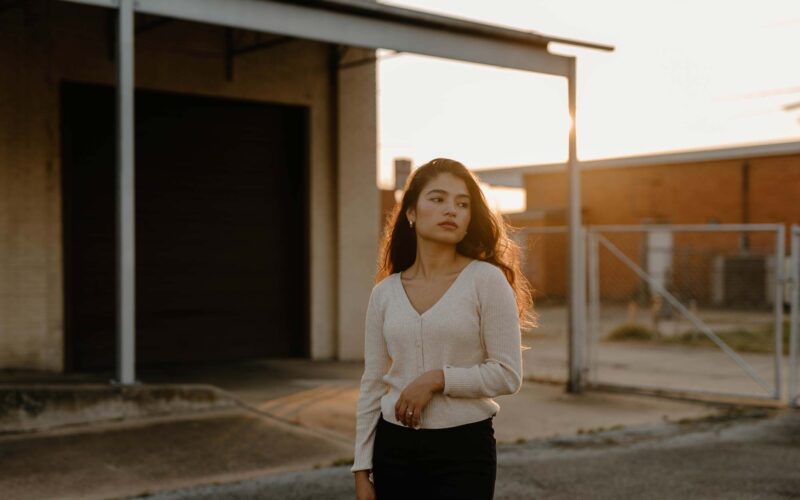Growing up in the foster care system feels like navigating a labyrinth that constantly shifts and changes beneath your feet. Every time you think you’ve found a straight path forward, a wall rises, and you’re left searching for a new direction. This has been my reality since I was seven years old, when I first entered the system. Now, in my mid-20s, the journey of piecing together my independence and identity continues, a puzzle that seems to grow more complex with time.
Early Years: A Carousel of Homes
My foster care journey began with a dizzying array of homes. Each new placement meant not just a new set of rules or a new bed but a complete upheaval of what little stability I had managed to find. I remember packing my few belongings in a trash bag – a silent signal in the foster world that you’re on the move again. One of the most vivid memories was the night before my third move in a year; I lay awake, staring at the ceiling of a room I knew wouldn’t be mine by the next night, wondering if there was something wrong with me. Was I unlovable? Too much trouble?
In one home, I found a temporary sanctuary with a woman named Mrs. Ellis. She had a warm, inviting house that smelled of fresh cookies and laughter. For a few months, I dared to hope that perhaps I could stay. I remember a specific afternoon, sitting at her kitchen table, working on a puzzle. She placed a piece in its spot and said, “See, Cathy, every piece has its place. Sometimes it just takes a while to find it.”
That night, as I lay in a bed adorned with pink sheets (a stark contrast to the sterile, often shared beds I was used to), I allowed myself to dream of permanence. But, like a fragile bubble, this dream burst when I was moved yet again, a reminder that hope was a luxury I couldn’t afford.
The Search for Identity Amidst Uncertainty
Navigating adolescence while bouncing from home to home felt like trying to build a house on quicksand. High school was a blur of trying to blend in while simultaneously standing out enough to be noticed by someone, anyone, who might see me as worthy of attention, of love. I clung to extracurriculars as lifelines, a way to forge some sense of identity. I joined the drama club, not because I had any grand aspirations of being an actress, but because it gave me the chance to be someone else, even if just for a little while. On stage, I wasn’t Cathy, the foster kid; I was Cathy, the character, free from the weight of my reality.
Yet, even in these moments of escape, the shadow of my circumstances loomed large. I remember the awkwardness of explaining to a well-meaning teacher why I couldn’t have my foster parents sign a permission slip for a field trip. “They’re not really my parents,” I said, the words tasting like ash in my mouth. It was a stark reminder of my in-between status, belonging nowhere and to no one.
Building a Future on Shifting Sands
Aging out of the foster care system was less a rite of passage and more a shove into the deep end of a pool with no lifeguard on duty. Suddenly, the constant oversight and rules vanished, replaced by an overwhelming freedom that felt more like abandonment. The challenge of finding my footing in adulthood was compounded by the lack of a safety net that most of my peers took for granted. College was a battlefield, not just academically but socially and financially. I worked two jobs to keep afloat, my dreams of further education clashing with the reality of immediate survival needs.
Finding housing was another puzzle. Without a family to co-sign a lease or offer a room in a time of need, I became adept at navigating Craigslist ads and learning the art of couch surfing. Each new living situation was a gamble, a temporary fix to the constant problem of belonging.
It was during one of these transient periods, living in a shared apartment with three strangers, that I stumbled upon a community center offering art classes. I had always harbored a secret love for painting, a way to express the emotions that words could never capture. This class became a sanctuary, a place where I could pour all of my fears, hopes, and unresolved longing onto canvas. It was here, amid the smell of paint and the quiet concentration of fellow artists, that I began to piece together a semblance of identity beyond my foster care label.
Reflections and Looking Forward
Looking back on my journey through and beyond the foster care system, I see a tapestry of experiences that have shaped me into the woman I am today. Each home, each transition, each challenge has added a stitch to the fabric of my being. The road to independence and self-discovery has been fraught with obstacles, but it has also been lined with moments of unexpected kindness and self-revelation. My identity, once fragmented and uncertain, has begun to coalesce around the roles of artist, survivor, and advocate.
The struggle for independence and identity after foster care is a testament to the resilience of the human spirit. It’s a narrative that doesn’t end with aging out of the system but continues with every step we take toward forging our own path. As I navigate my mid-20s, the lessons of my past serve as both a foundation and a launching pad for the future I am determined to build. My story, like those of so many others who have walked this path, is one of perseverance, hope, and the unyielding quest for a place to call home.

